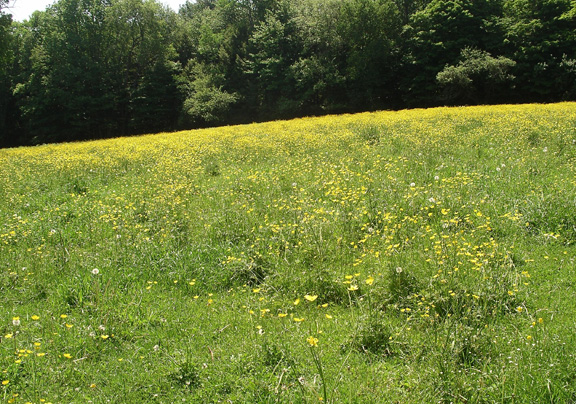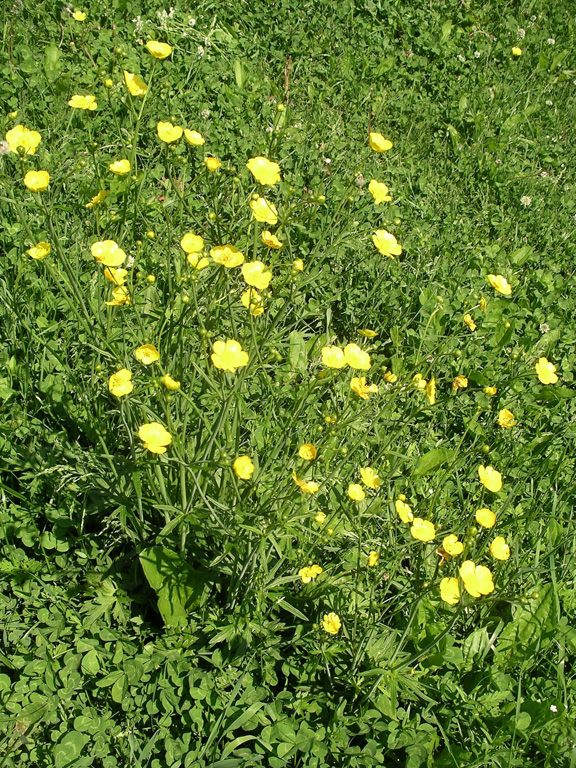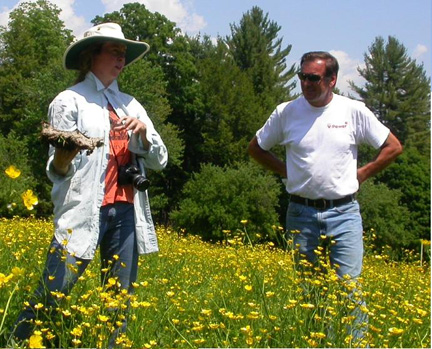I attended a pasture walk coordinated by NOFA-VT at Malcolm Sumner’s dairy farm in West Halifax earlier this week. For those of us who don’t get to southern VT very often, the drive down alone was a treat.
Two topics of conversation that came up: buttercups, and manure.
Buttercups growing in a field look very impressive, like they’ve taken over a field, like this:

In truth, they look like they take up more space than they actually do. The Sumner cows were able to graze easily around and right up to them.

The tremendous number of buttercups at the Sumner Farm prompted the question: do we want to get rid of them, and if so, how should we do it? This led into a discussion around the unwanted species in general and the roles that they play. Observations were made that buttercups are often found in soils where there may be significant water flowing under the soil, and on slopes where animals may be depositing their manure fertility inconsistently. On a farm with springs and nary a flat pasture surface, the Sumner Farm fits that description. Buttercups, due to their long tap root, have the ability to reach further below the surface to find water and minerals, and help hold the soil.
Buttercups do have a low toxicity rating, primarily causing oral and digestive tract irritation. Most animals choose not to eat it for this reason. Malcolm noted that after he grazes through the pastures, he also clips them to even the plant competition. Once wilted, the cows are more likely to choose to eat the buttercups.
For more information, check out the VT Invasive Plants list:
http://pss.uvm.edu/vtcrops/articles/VTPoisonousPlants.pdf
We also talked about the multiple ways to manage manure pats…whether to break up the pats to encourage faster breakdown, or leave the pats to crust over.

Many people break up pats to expose parasites to the sun and air (in theory killing them). Recently Dr. Ann Wells visited VT to speak about managing health and parasites; her feeling is that breaking up pats spreads parasites around more widely than it actually kills them in our climate. It’s moist and warm enough in VT to actually encourage parasite growth under these conditions. She says the spreading technique works best in very hot, and VERY DRY climates.
The argument was then made among the group that allowing manure to crust over and form its own mini-ecosystem is better for parasite management and long term soil health. When allowed to do its biological “thing” uninterrupted, the pat encourages the growth of parasitic wasps which reduce fly populations, increase dung beetles and worms…in short, attract many of the beneficial species we want.
This led us all into a great conversation about dung beetles. Thanks to Kevin Kaija for digging (no pun intended!) up this list of North Carolina dung beetles, with pictures on pages 6 & 7.
http://www.uvm.edu/~pasture/Documents/guidetoncdungbeetles%20%282%29.pdf
Most of these species are not found in VT, but several are…so keep flipping over those pats and tell us what you see!
Jenn

